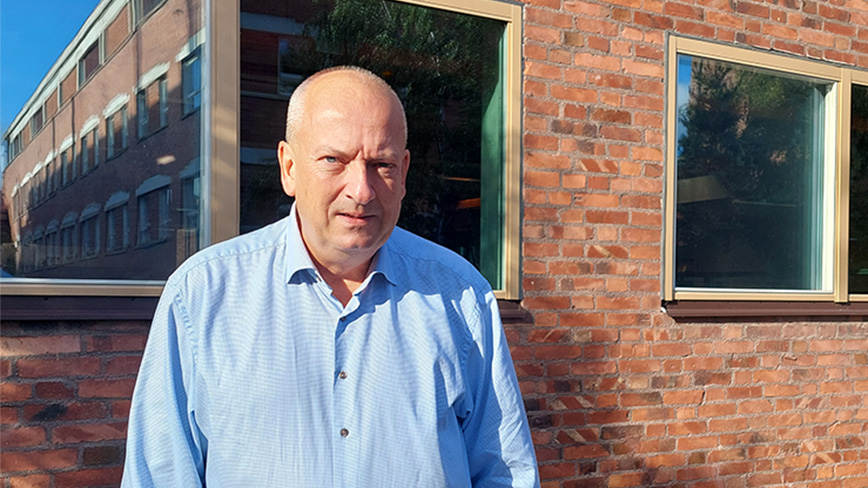"The whole picture is our motto"

The Department of Fiber and Polymer Technology is relatively large and its operations occupy almost two buildings on Teknikringen. The department was formed about 20 years ago by the merging of the department of Polymer Technology and the department of Pulp and Paper Technology.
"The timing was very good, since the forest industry was changing and looking for new applications, while the traditional plastics industry was becoming more oriented towards new renewable raw materials. And then we got all the parts in one department," says Mats Johansson, Head of Department of Fiber and Polymer Technology.
With approximately 150 employees, of which 16 are professors and 63 doctoral students, the department's operations occupy the entire Teknikringen 56-58, as well as 1.5 floors at Teknikringen 48. About ten years ago, the research center Wallenberg Wood Science Center, WWSC, was established. It is strongly connected to the department and focuses on new materials from the forest.
"Then, we have worked strategically based on where there are needs and problems. We see that new materials are needed for the energy sector, for example for cable insulation or for batteries. A classic way to transfer energy over long distances is to use direct current. In order for the transmission to be effective, as high a voltage as possible is required, and this places great demands on the cable insulation material," says Mats Johansson.
Nanomaterials increasingly important
A research area that has increased in importance is nanomaterials, where the department's researchers are active in, for example, the area of nanocellulose, to find out how it works and how it can be used. Nanocellulose are cellulose fibers that have been broken down into fibrils at the nanometer level. Nanocellulose behaves differently than ordinary cellulose fibers, which consist of macroscopic fibers, and makes it possible to develop stronger materials.
Another area that is growing and where the department has several professors, is materials for medical technology.
"For example, it can be about tissue regeneration for implants – you create a skeleton around which tissue can grow. Another example is bone glue, where complicated fractures are fixed in a new way," says Mats Johansson.
Strong connection to the forest
Renewable raw materials continue to be a major area of research, with sustainability aspects of materials. There is a strong connection to the forest, but also to other sources such as agricultural products.
"The whole picture is our motto, we usually say that we work all the way from molecules to materials on a large scale and that there must be sustainable material solutions," says Mats Johansson.
What was your assessment in the research evaluation RAE?
"We have come out of the RAE well. We have a good impact, but it is a process to work with all the time. It's about getting good engineers, PhDs and publications out and about being seen. Several research projects have led to industrial benefits, we have a lot of industrial collaborations. We have both spinoff companies and projects with larger companies. A fairly large part of Greenhouse lab's companies originate from our institution."
"The big point at the moment is the economy. KTH has too high charges - the more money we take in, the less basic funding we have left as it is "eaten up" by counter-financing. It is a bit outside of our control at the moment, as there are, among other things, premises costs and central overhead. But we graduate both engineers and doctors, all of whom get good jobs. I usually think that is the biggest proof that you are doing something right."
What impact does your research have on society?
"It is useful. Many people talk about sustainability and what happens if we do nothing, and we work to find technical solutions to address those problems – everything from more efficient energy use to sustainable materials. Many people describe the problems, but not as many work to develop solutions."
"Take the company Renewcell for example. Clothing recycling did not exist before, now they have built a factory in Sundsvall, where clothing material is recycled and turned into new threads. They will be able to produce 120,000 tons of fiber pulp annually, which is used to produce new textiles. That corresponds to almost half a billion t-shirts."
You seem hopeful about the future?
"We do our best to find technical solutions to the big challenges. One of the biggest contributions we make in the long term is, of course, the engineers and doctors who will influence society throughout their entire professional lives," says Mats Johansson
Text: Sabina Fabrizi

